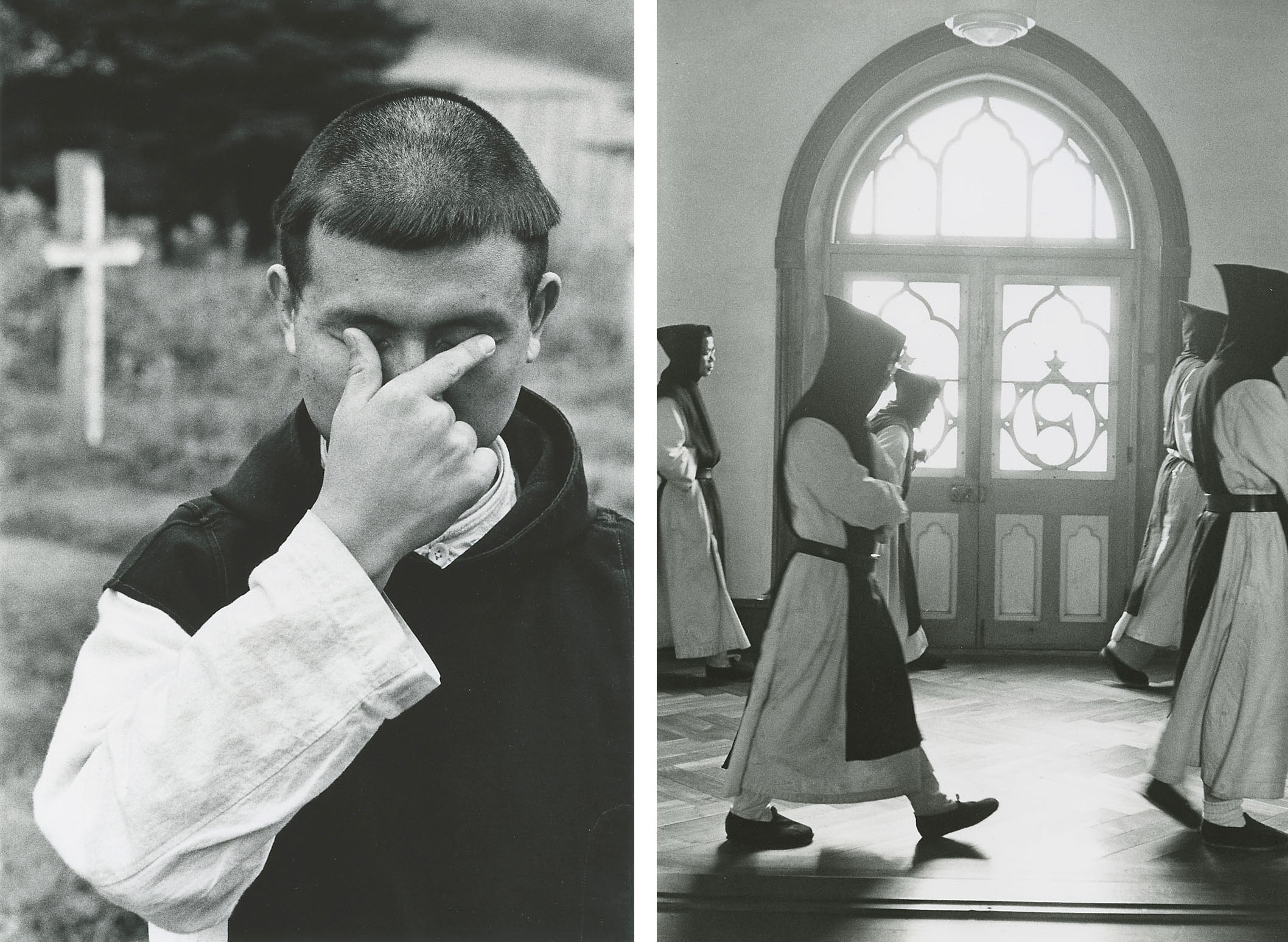In the late 1950s, after having studied law and while pursuing a masters degree in art history, Ikko Narahara took two series of images that depicted groups of people at the extreme edges of society. One was of a woman's prison in Wakayama Prefecture and the other a Trappist monastery in Hokkaido. These images have become canonical in the history of Japanese photography, and the donation by the Nikon Corp. of their collection of images by Narahara to the National Museum of Modern Art may mean yet greater recognition of the photographer's work.
Lovers of black-and-white photography will be drawn to the elegiac and melancholy quality of "Domains," while Japanophiles and old-school Orientalists will probably assume that they are exercises in contemplative spirituality. However, while they may be studies of silence — voluntary and enforced — they are pregnant with communicative and interrogatory power.
The visual theorist WJT Mitchell provocatively asked once, "what do pictures want?" and the work in "Domains" is a pertinent series of images with which to pursue this question.



